Собор Воскресения Христова (Спас на Крови)Cathedral of the Resurrection of Christ (Savior on Blood)
12 photo with description30.04.2020 10:15
30.04.2020 10:15
Andrey Panevin

One of the architectural gems of St. Petersburg is the Cathedral of the Resurrection of Christ (Savior on Blood).
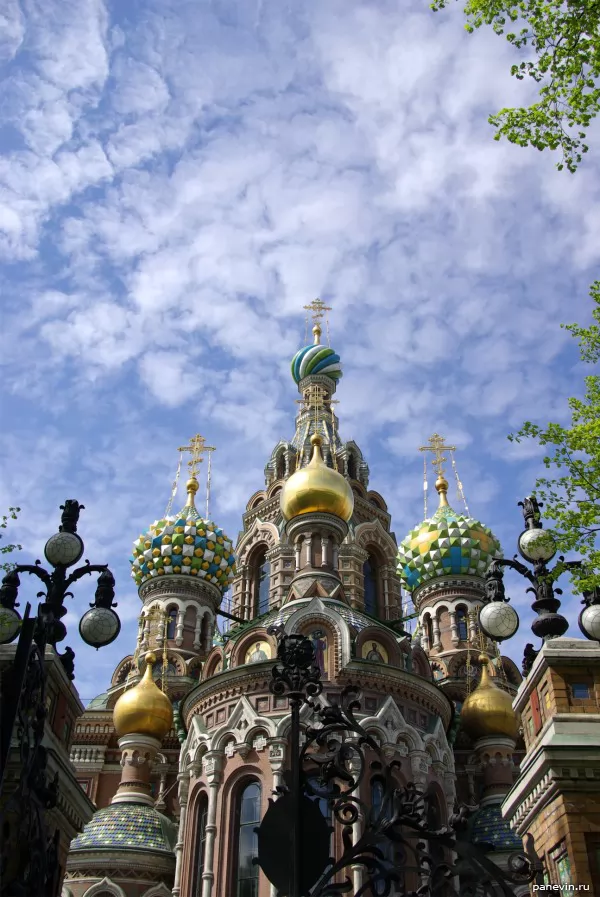 Savior on Spilled Blood, view of the apse from the Mikhailovsky Garden. The temple was built on the site of the fatal wound of Emperor Alexander II during the assassination attempt organized by the People's Will on March 1 ( 13 ), 1881 . The very next day, at an extraordinary meeting, the City Duma decided to build a temple on this site. The photo shows a temporary chapel. Entrance to the cathedral. The project of the temple was approved by Emperor Alexander III
Savior on Spilled Blood, view of the apse from the Mikhailovsky Garden. The temple was built on the site of the fatal wound of Emperor Alexander II during the assassination attempt organized by the People's Will on March 1 ( 13 ), 1881 . The very next day, at an extraordinary meeting, the City Duma decided to build a temple on this site. The photo shows a temporary chapel. Entrance to the cathedral. The project of the temple was approved by Emperor Alexander III
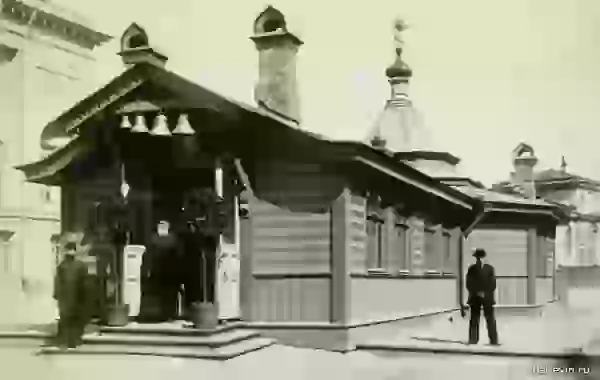
Savior on Blood
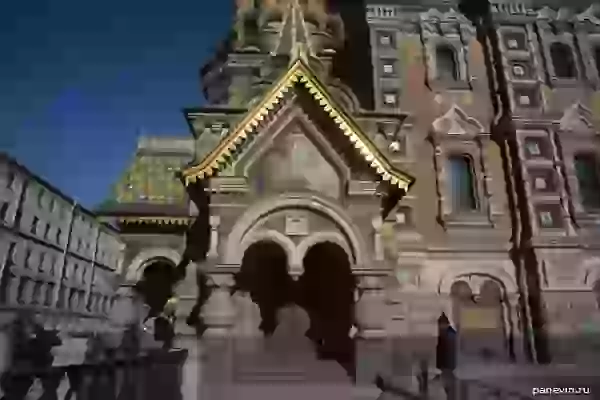
not immediately, but the approved project of the architect Alfred Parland and the abbot of the Trinity-Sergius Hermitage, Archimandrite Ignatius (Malyshev), should be finalized under the supervision of Professor D.I.Grimm. The temple was originally planned in the "Russian style", which is why it has similarities with St. Basil's Cathedral in Moscow and the cathedrals of Yaroslavl . A canopy over the place where Emperor Alexander II was fatally wounded. A part of the pavement and the canal embankment fence, stained with the blood of the Tsar-Martyr, are preserved under it. It is located in the western part of the temple, right above it is a bell tower with a large golden dome.
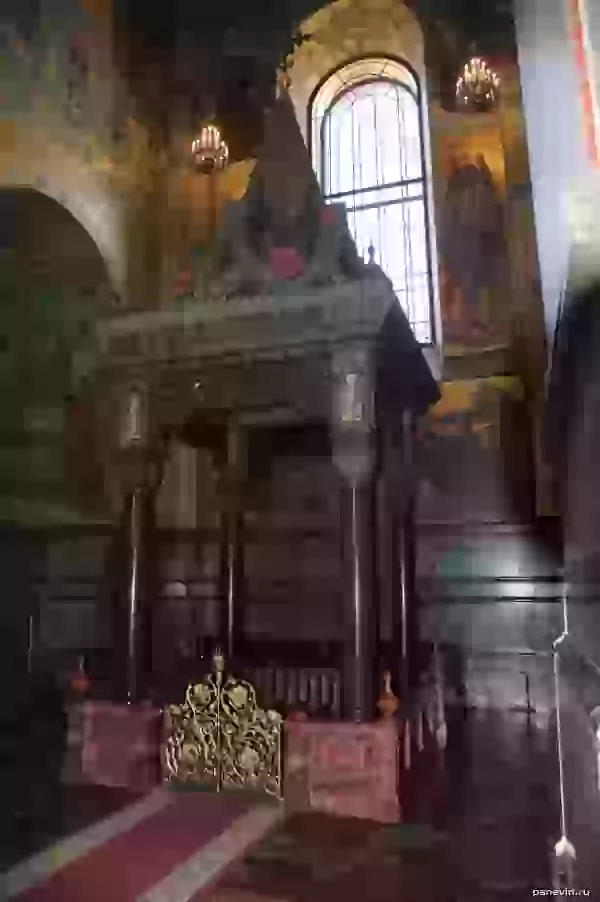
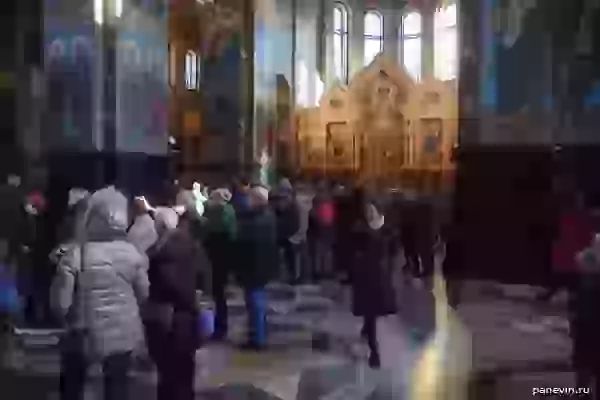
The walls are faced with glazed Siegersdorf bricks in ten shades and are richly decorated with decorative elements. The uniqueness of the cathedral is in its mosaic decoration - numerous mosaics made in the Frolovs workshop, decorating the temple inside and outside. Temple model. The northern icon case is the place for the most revered icons. As well as the Southern icon case, it was made by masters of the Yekaterinburg lapidary and Kolyvan grinding factories from pink rhodonite, Korgon parfir, Revnevskaya, Orsk and Aushkul jasper. On the north, the mosaic "Alexander Nevsky", on the south - "The Resurrection of Christ" typed according to the sketch of M. V. Nesterov in the mosaic department of the Academy of Arts. Icons and a piggy bank for donations. Painting under one of the domes.
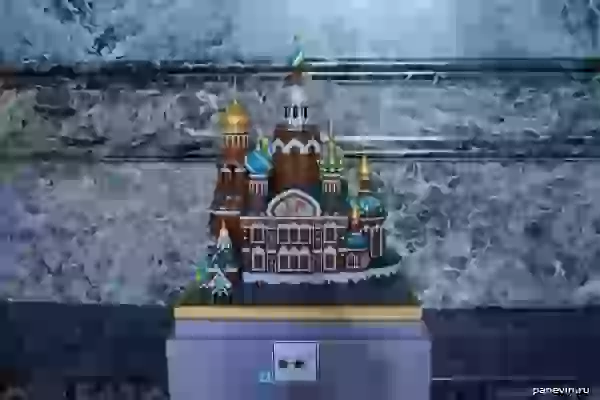
Temple model
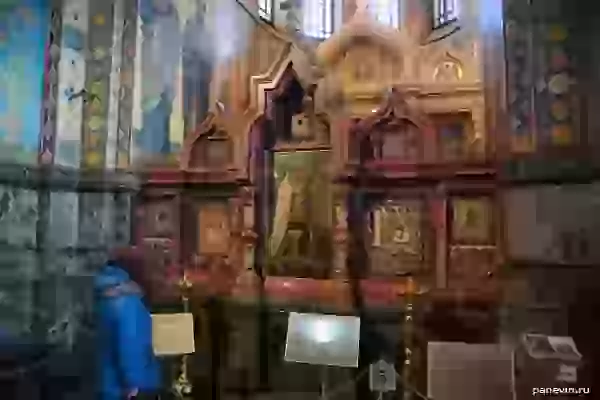
Northern icon case
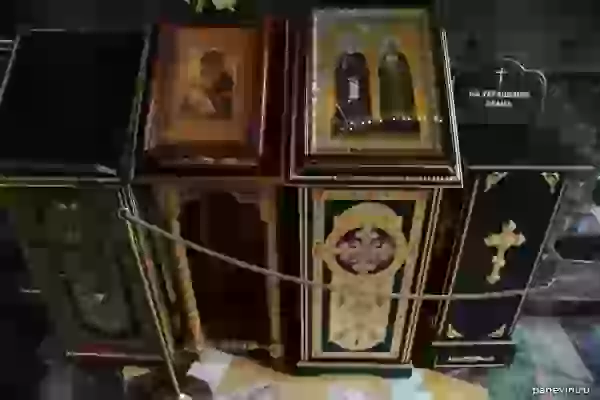
Icons
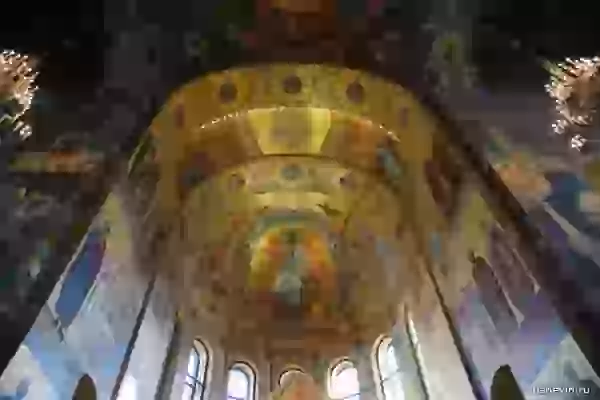
Dome
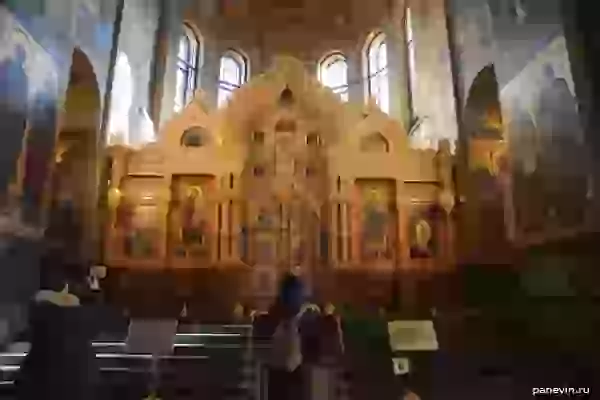
The iconostasis is a barrier that separates the altar from the central part of the temple. Made of multicolored Italian marble in Genoa by Novi. The face of Christ under the central dome. Church shop. In the 1920s, the temple was closed, and in 1938 it was decided to demolish it - the Second World War prevented it. During the years of the blockade, the cathedral housed a morgue, and the dead Leningraders were brought here. After the war, the temple rented the Maly Opera House and set up a warehouse for the scenery there. In 1961, a German high-explosive shell was discovered in the central dome of the temple - the churches and cathedrals of Leningrad, being noticeable high-rise dominants, were landmarks for German artillery. In the song "Sadness Came" by Alexander Rosenbaum, the Savior on Spilled Blood is mentioned:
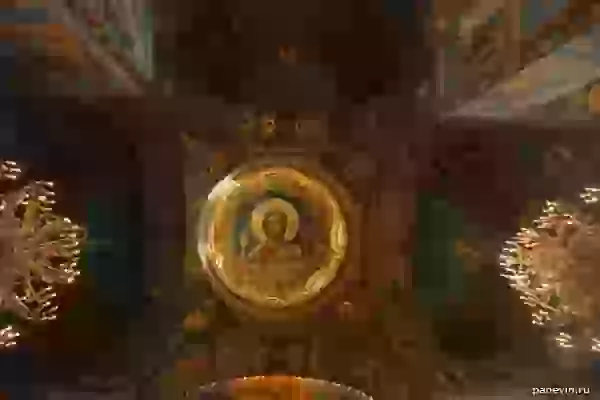
The face of Christ under the central domev

Church shop
“I want to make the houses look familiar from childhood.
I dream of removing forests from the Savior on Spilled Blood "(in another version -" I have been dreaming of removing forests from the Savior on Spilled Blood for twenty years ").
 Savior on Spilled Blood, view of the apse from the Mikhailovsky Garden. The temple was built on the site of the fatal wound of Emperor Alexander II during the assassination attempt organized by the People's Will on March 1 ( 13 ), 1881 . The very next day, at an extraordinary meeting, the City Duma decided to build a temple on this site. The photo shows a temporary chapel. Entrance to the cathedral. The project of the temple was approved by Emperor Alexander III
Savior on Spilled Blood, view of the apse from the Mikhailovsky Garden. The temple was built on the site of the fatal wound of Emperor Alexander II during the assassination attempt organized by the People's Will on March 1 ( 13 ), 1881 . The very next day, at an extraordinary meeting, the City Duma decided to build a temple on this site. The photo shows a temporary chapel. Entrance to the cathedral. The project of the temple was approved by Emperor Alexander III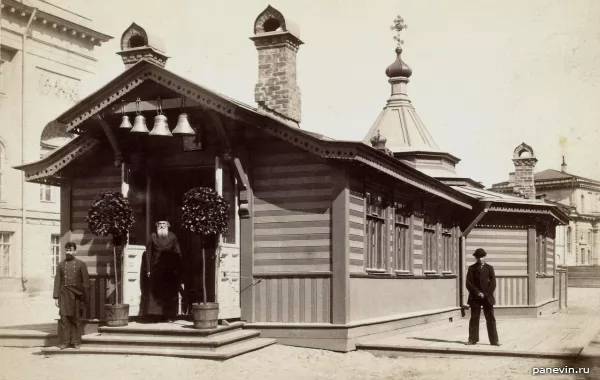
Savior on Blood
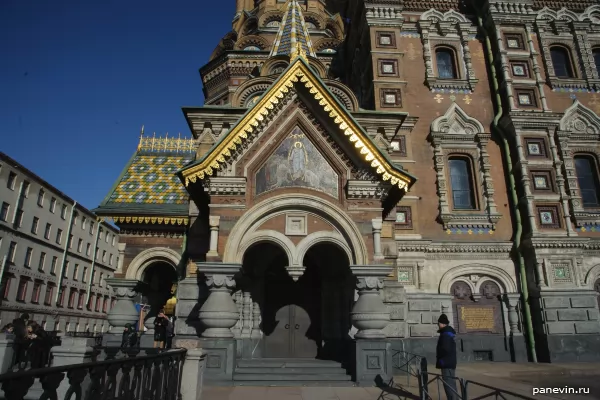
not immediately, but the approved project of the architect Alfred Parland and the abbot of the Trinity-Sergius Hermitage, Archimandrite Ignatius (Malyshev), should be finalized under the supervision of Professor D.I.Grimm. The temple was originally planned in the "Russian style", which is why it has similarities with St. Basil's Cathedral in Moscow and the cathedrals of Yaroslavl . A canopy over the place where Emperor Alexander II was fatally wounded. A part of the pavement and the canal embankment fence, stained with the blood of the Tsar-Martyr, are preserved under it. It is located in the western part of the temple, right above it is a bell tower with a large golden dome.
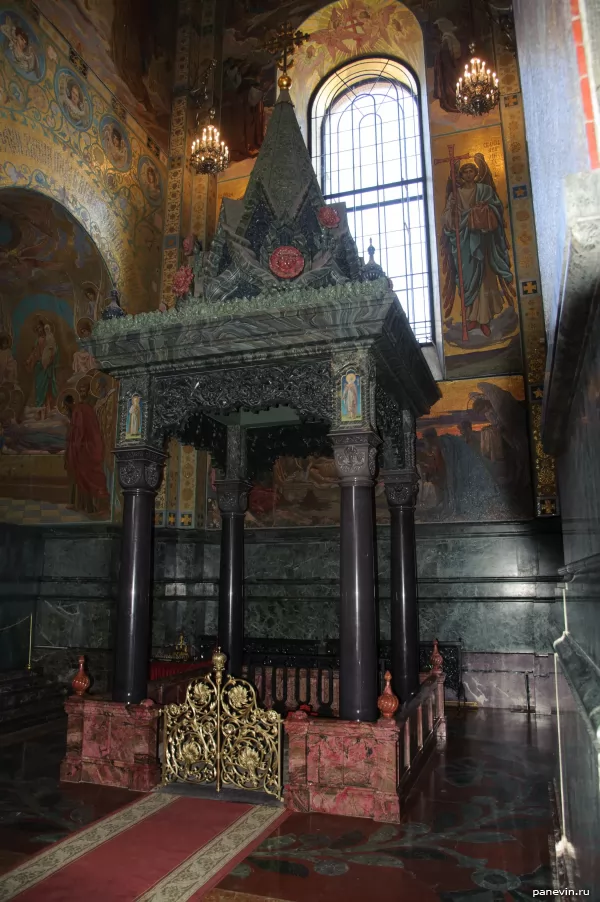

The walls are faced with glazed Siegersdorf bricks in ten shades and are richly decorated with decorative elements. The uniqueness of the cathedral is in its mosaic decoration - numerous mosaics made in the Frolovs workshop, decorating the temple inside and outside. Temple model. The northern icon case is the place for the most revered icons. As well as the Southern icon case, it was made by masters of the Yekaterinburg lapidary and Kolyvan grinding factories from pink rhodonite, Korgon parfir, Revnevskaya, Orsk and Aushkul jasper. On the north, the mosaic "Alexander Nevsky", on the south - "The Resurrection of Christ" typed according to the sketch of M. V. Nesterov in the mosaic department of the Academy of Arts. Icons and a piggy bank for donations. Painting under one of the domes.
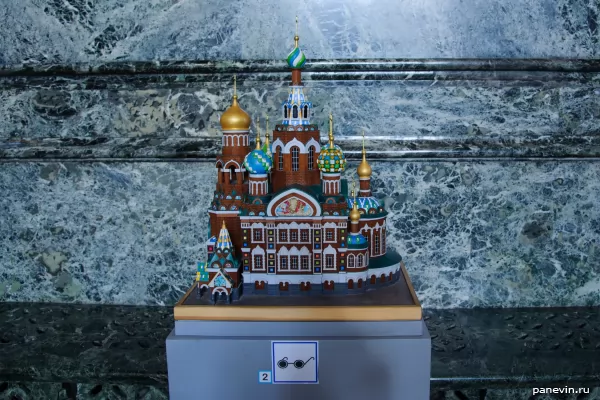
Temple model
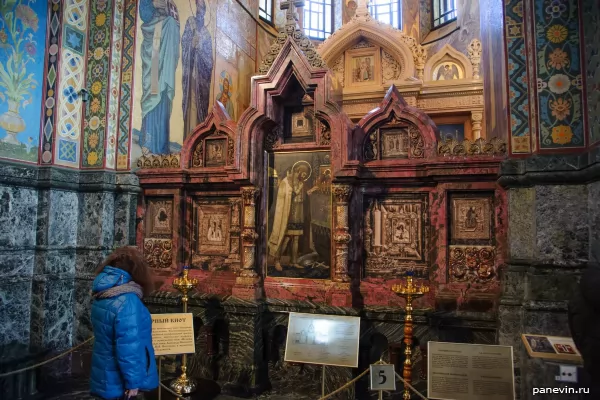
Northern icon case
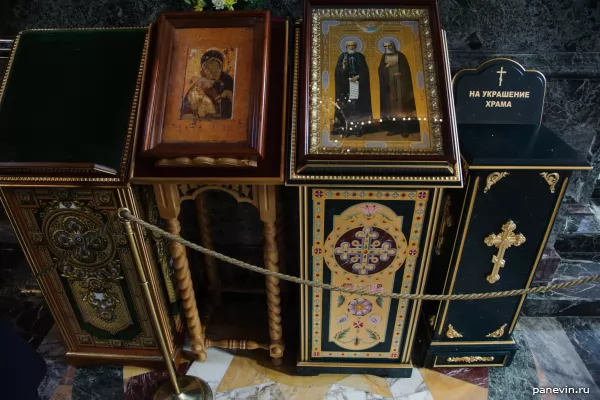
Icons
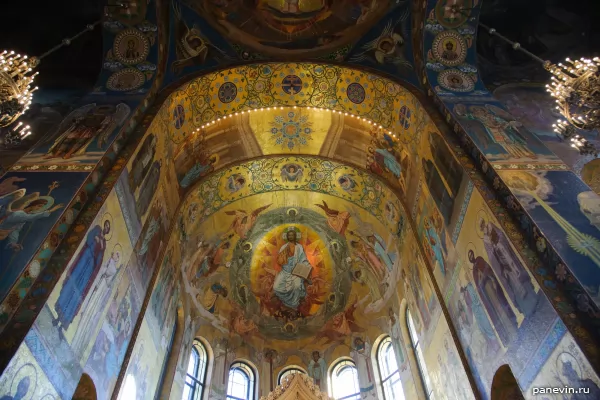
Dome
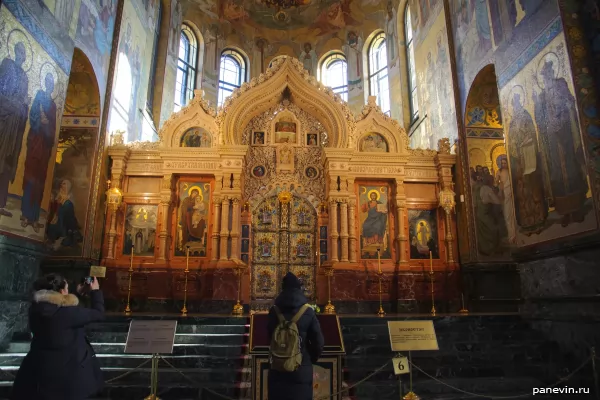
The iconostasis is a barrier that separates the altar from the central part of the temple. Made of multicolored Italian marble in Genoa by Novi. The face of Christ under the central dome. Church shop. In the 1920s, the temple was closed, and in 1938 it was decided to demolish it - the Second World War prevented it. During the years of the blockade, the cathedral housed a morgue, and the dead Leningraders were brought here. After the war, the temple rented the Maly Opera House and set up a warehouse for the scenery there. In 1961, a German high-explosive shell was discovered in the central dome of the temple - the churches and cathedrals of Leningrad, being noticeable high-rise dominants, were landmarks for German artillery. In the song "Sadness Came" by Alexander Rosenbaum, the Savior on Spilled Blood is mentioned:
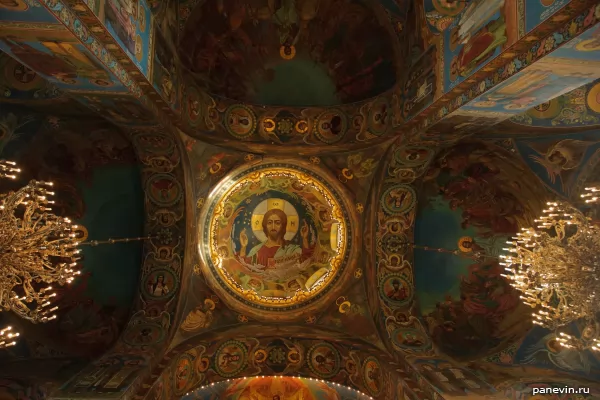
The face of Christ under the central domev
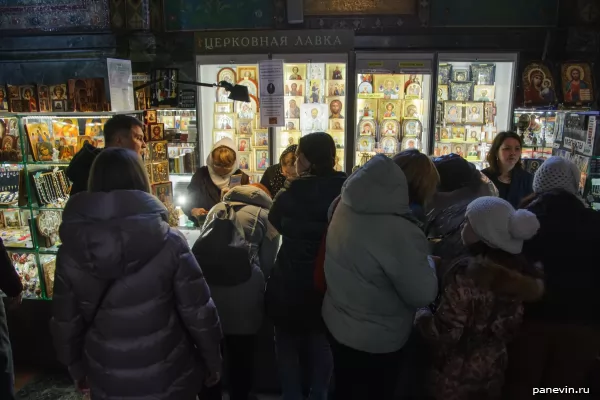
Church shop
“I want to make the houses look familiar from childhood.
I dream of removing forests from the Savior on Spilled Blood "(in another version -" I have been dreaming of removing forests from the Savior on Spilled Blood for twenty years ").
Share:
Themes: attractions 134 Church of the Savior on Blood 1 churches and cathedrals 24 photos 417 St.-Petersburg 119
Ticket sales through JetRadar.com service without commissions and markups.
← Blog
sobor_voskreseniya_hristova_spas_na
blog










